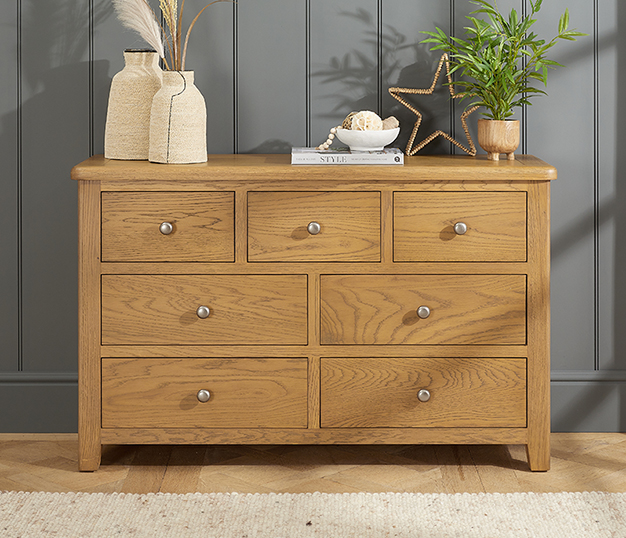The Most Up To Date Trends in Sustainable Furniture Style for Eco-Conscious Buyers
The Most Up To Date Trends in Sustainable Furniture Style for Eco-Conscious Buyers
Blog Article
Elegant and sturdy: The very best Materials for Long-Lasting Furnishings
The option of materials for furnishings style is a vital factor in attaining both toughness and style. Woods like oak and maple not only give aesthetic warmth yet also provide exceptional strength, while engineered timber provides an attractive choice for budget-conscious consumers - Furniture.
Strong Timber Options

Softwoods like want and cedar likewise existing viable choices, albeit with different features. Pine is light-weight and very easy to deal with, making it a superb choice for rustic furnishings, while cedar is naturally immune to degeneration, perfect for exterior applications.
It is necessary to think about the intended use of the furnishings when picking a timber type. For circumstances, items that sustain hefty wear must prioritize more difficult woods, while decorative things might profit from softer, much more visually enticing varieties. Inevitably, the right selection of strong timber not just enhances the durability of the furnishings yet additionally boosts the general aesthetic of the space.
Engineered Wood Perks
Engineered wood, usually described as composite wood, offers countless advantages that make it an engaging option for long-lasting furnishings. One of the main benefits of engineered timber is its improved stability contrasted to solid wood. Built from layers of wood fibers or veneers, it minimizes the danger of warping and cracking, which prevail issues with natural wood due to adjustments in humidity and temperature.

Furthermore, crafted wood is an eco-friendly option, as it utilizes smaller trees and timber by-products, promoting sustainable forestry methods. The manufacturing process likewise causes much less waste, making it a responsible option for eco-conscious customers.
Metal Toughness
Supplying remarkable stamina and durability, metal is a prime material option for long lasting furnishings. Understood for its long life, metal can hold up against substantial wear and tear, making it a perfect option for both domestic and industrial environments. Whether it is steel, aluminum, or wrought iron, each type of steel supplies one-of-a-kind buildings go to these guys that add to the total durability of the furniture.
Steel, as an example, is celebrated for its high tensile strength and resistance to bending, guaranteeing that items stay structurally sound in time. Aluminum, on the other hand, is lightweight and resistant to corrosion and deterioration, making it particularly suitable for outdoor furniture. Wrought iron, with its traditional allure, flaunts exceptional resilience and can endure rough climate condition without compromising its integrity.
In addition to its physical residential or commercial properties, steel furniture typically goes through protective therapies, such as powder covering or galvanization, which additionally enhance its resistance to scratches and environmental variables. This level of durability makes steel furniture a beneficial investment, as it not just maintains its visual appeal however also stands the examination of time, ensuring performance for several years to find.
Furniture Selections
Choosing the appropriate upholstery is vital for improving both the durability and aesthetic appeal of furnishings. Upholstery products can considerably influence the durability of a piece, with choices varying from natural fibers to synthetic fabrics.
Natural fibers, such as cotton and bed linen, deal breathability and comfort however might require more upkeep to withstand fading and use gradually. Conversely, woollen is a durable choice understood for its resilience and resistance to discoloration, making it ideal for high-traffic areas.
For those looking for durability with much less maintenance, synthetic products like polyester and nylon offer superb options. These fabrics are commonly engineered to be stain-resistant and fade-proof, making them excellent for households with youngsters or animals. Microfiber, a subtype of polyester, is especially preferred for its soft structure and simple cleaning buildings.
Leather, while usually more expensive, adds a timeless beauty to furnishings. Its natural toughness permits it to age perfectly, creating an one-of-a-kind aging with time. Nonetheless, it needs certain maintenance to preserve its luster.
Inevitably, picking upholstery entails stabilizing aesthetic preferences with sensible factors to consider, making sure that the furniture not only looks excellent however likewise stands the test of time. Furniture.
Lasting Materials
Emphasizing ecological duty, sustainable products have actually acquired prominence in furnishings design, reflecting an expanding understanding of ecological impact. have a peek at this website These products not only reduce the carbon impact but additionally make sure the durability of furniture, adding to a circular economic climate.
Common lasting materials consist of reclaimed timber, which repurposes existing wood, lowering the requirement for deforestation. Bamboo is one more superb selection; it is fast-growing and needs marginal sources, making it an environmentally friendly choice to typical woods. In addition, recycled metals and plastics are increasingly utilized in furniture manufacturing, promoting waste decrease and source conservation.
All-natural fibers such as natural cotton, hemp, and linen are preferred for furniture, as they are naturally degradable and totally free from unsafe chemicals. The use of low-VOC (volatile organic substances) coatings and adhesives even more boosts the sustainability of furniture, guaranteeing far better indoor air high quality.
Verdict
Solid woods like oak and maple provide strength and unique personality, while here crafted wood offers security and cost-effectiveness. Sustainable products such as redeemed wood and bamboo contribute to ecological duty, making them suitable for modern furniture solutions that prioritize both design and longevity.
Engineered timber, commonly referred to as composite wood, offers countless benefits that make it a compelling choice for durable furniture. One of the primary advantages of engineered timber is its boosted stability compared to strong wood. Created from layers of wood fibers or veneers, it minimizes the threat of warping and cracking, which are typical issues with all-natural wood due to adjustments in humidity and temperature level.
Strong woods like oak and maple give stamina and unique personality, while engineered timber offers security and cost-effectiveness. Sustainable products such as reclaimed timber and bamboo contribute to ecological responsibility, making them suitable for contemporary furnishings services that focus on both style and longevity.
Report this page